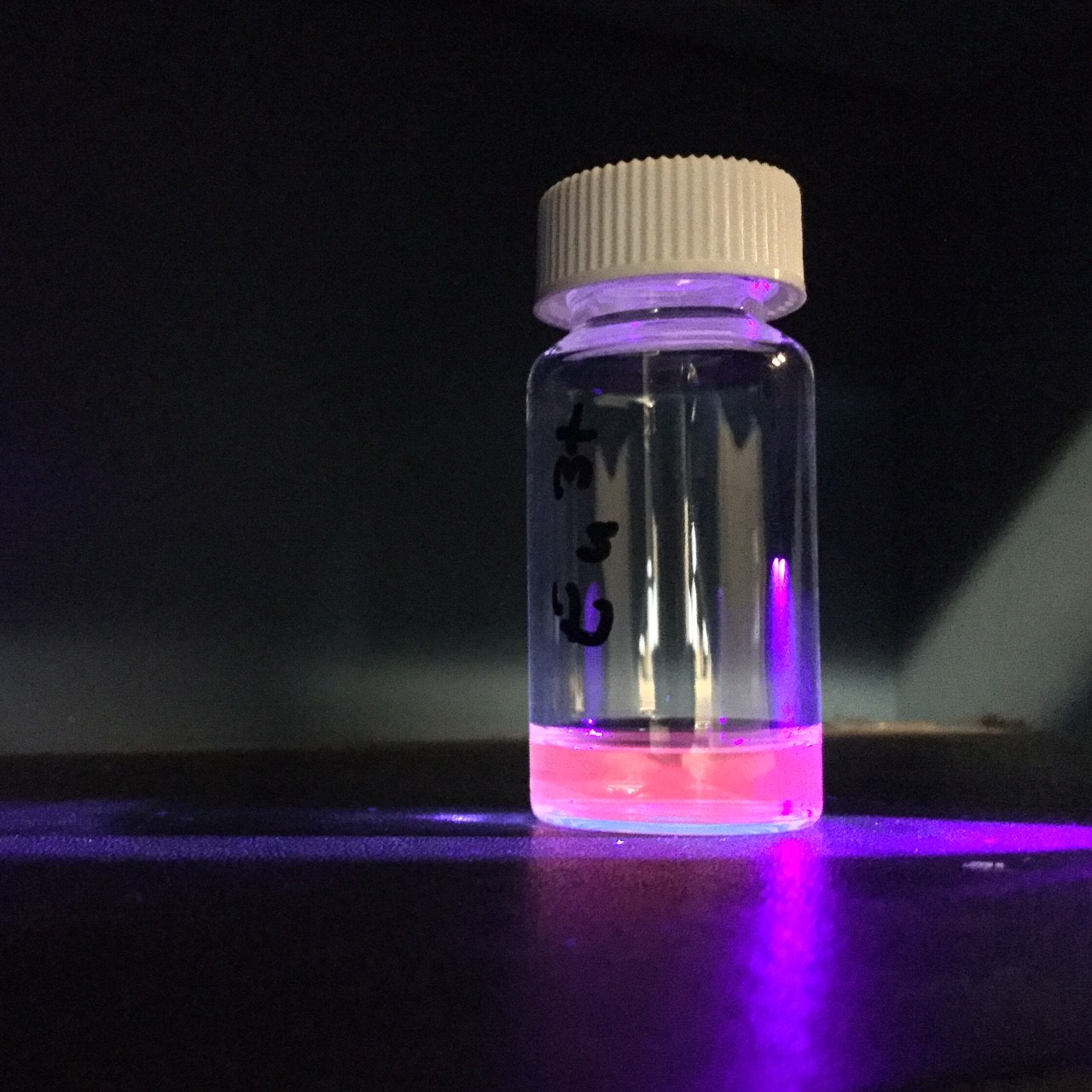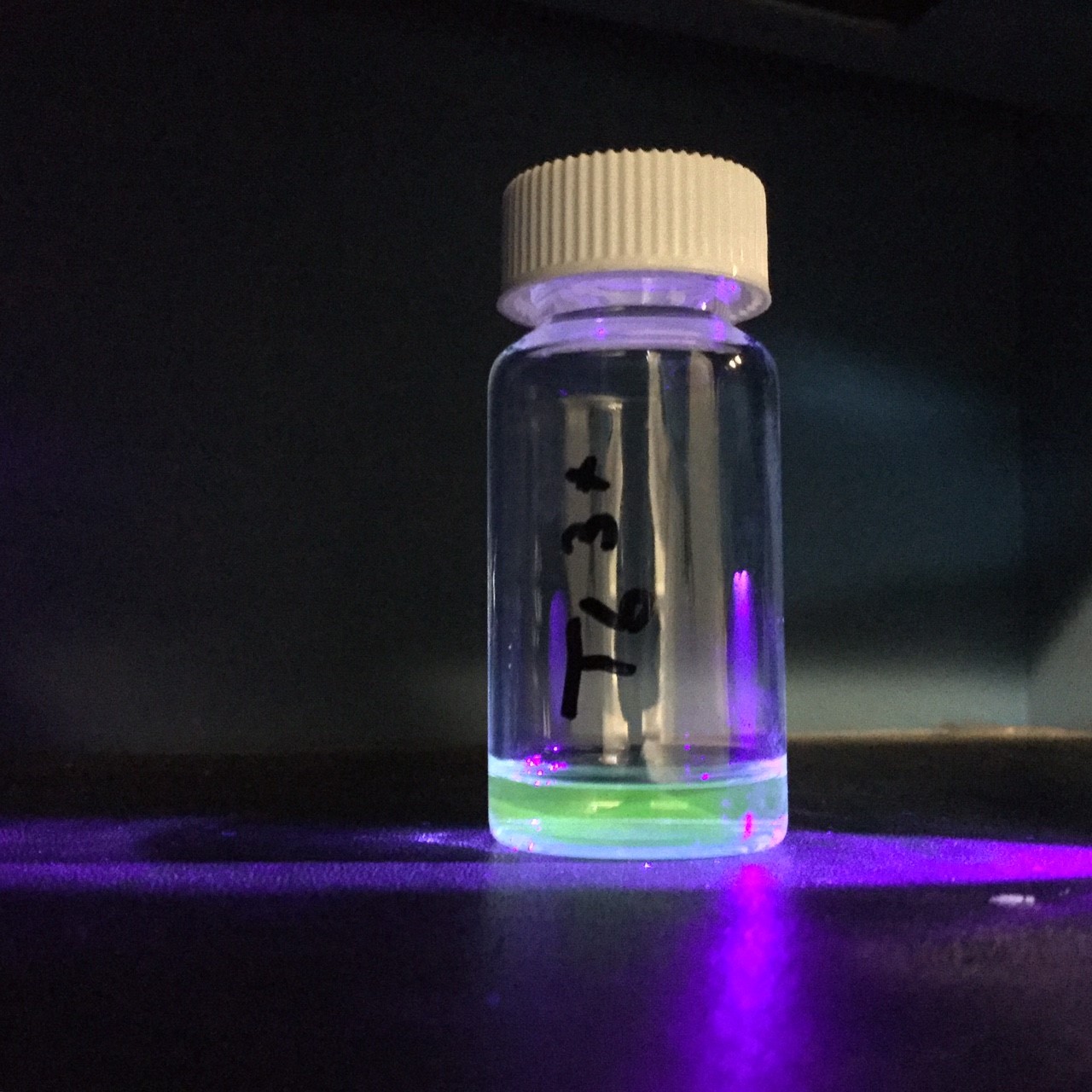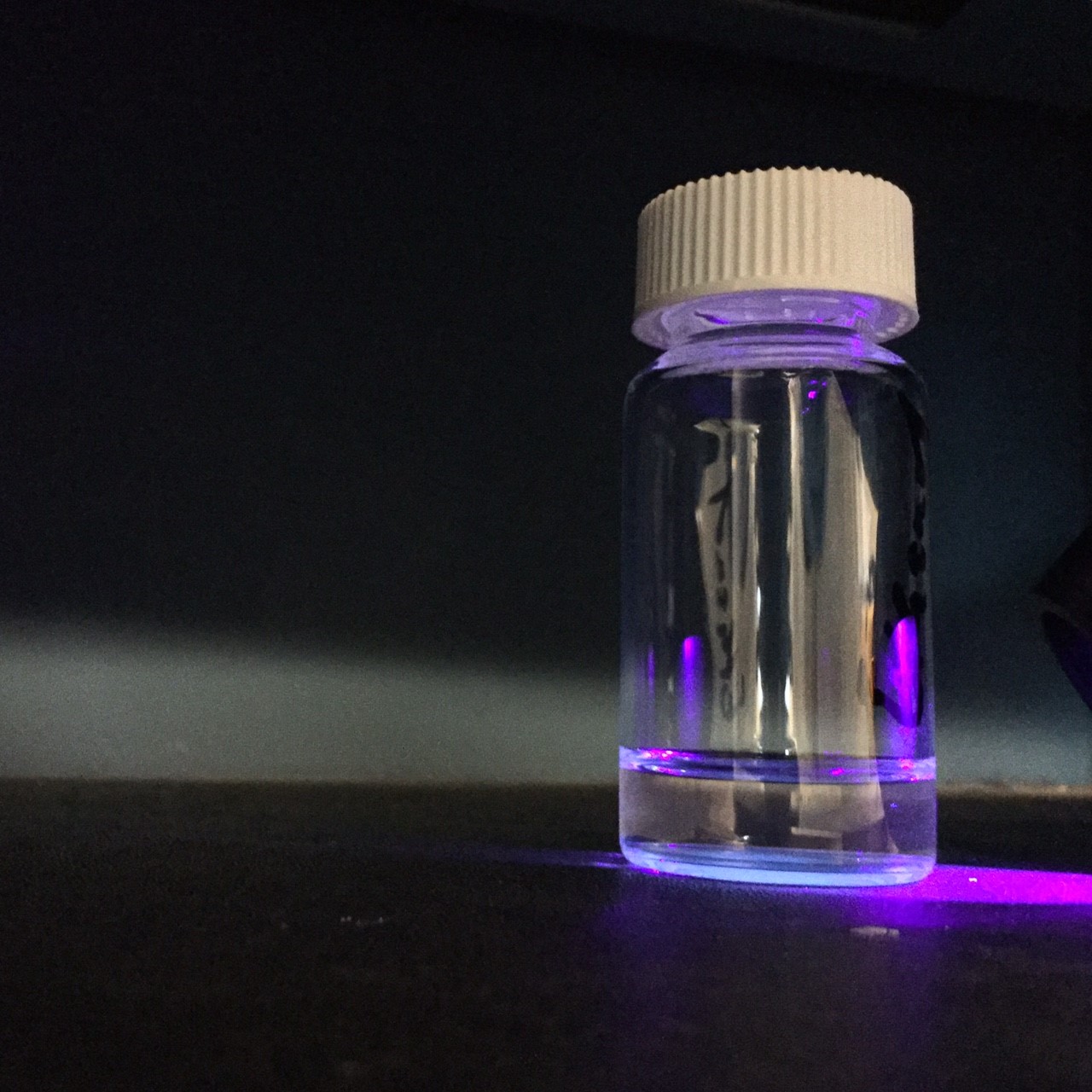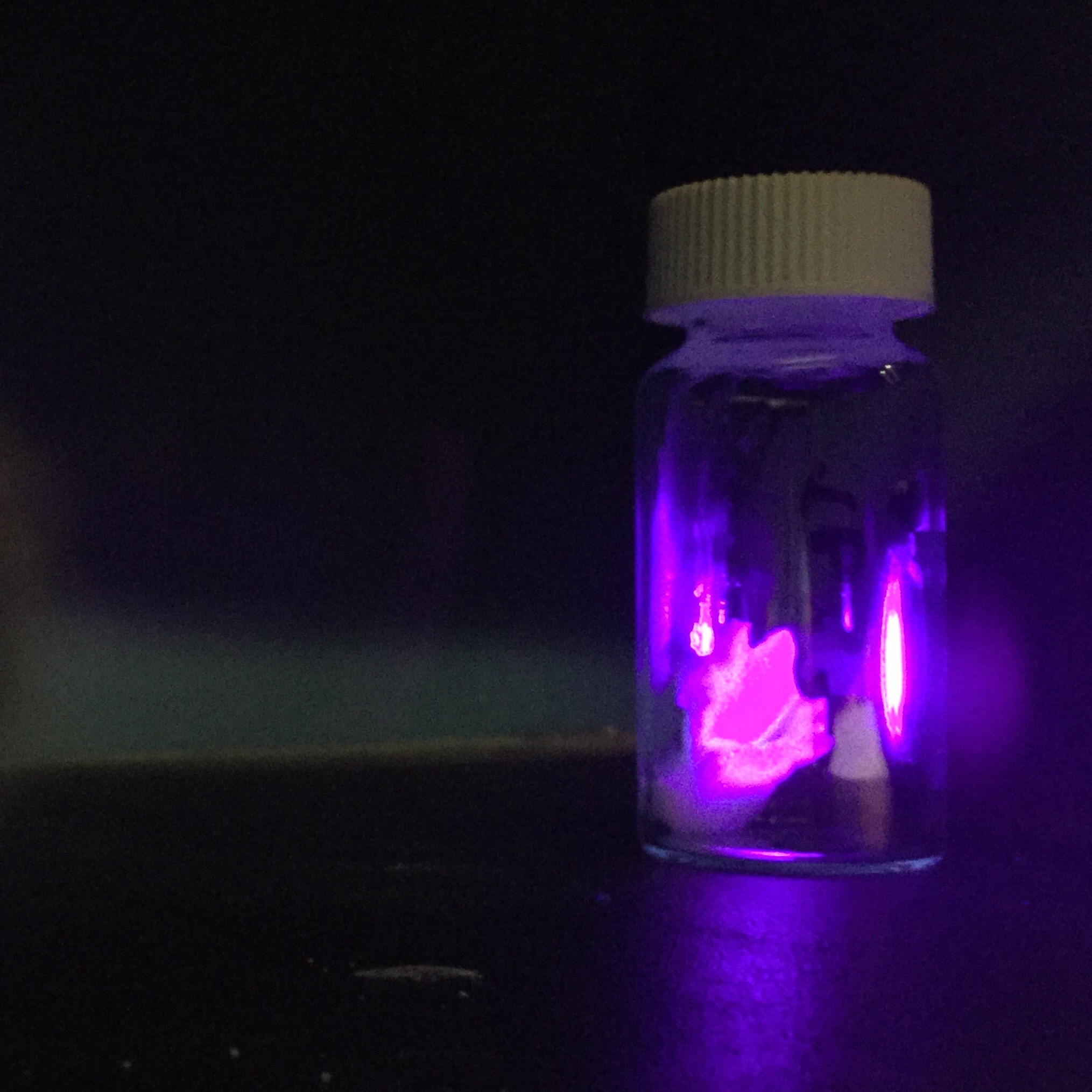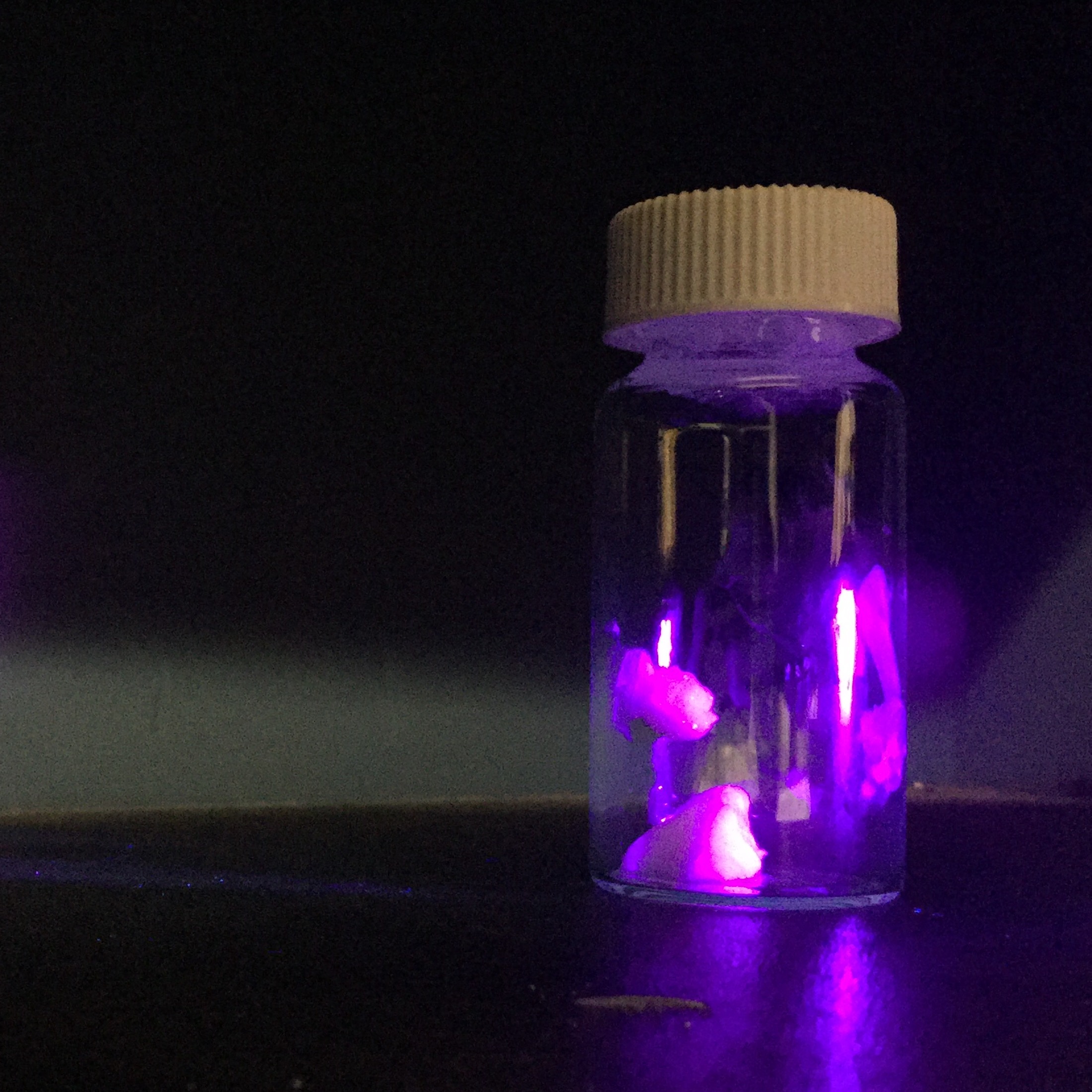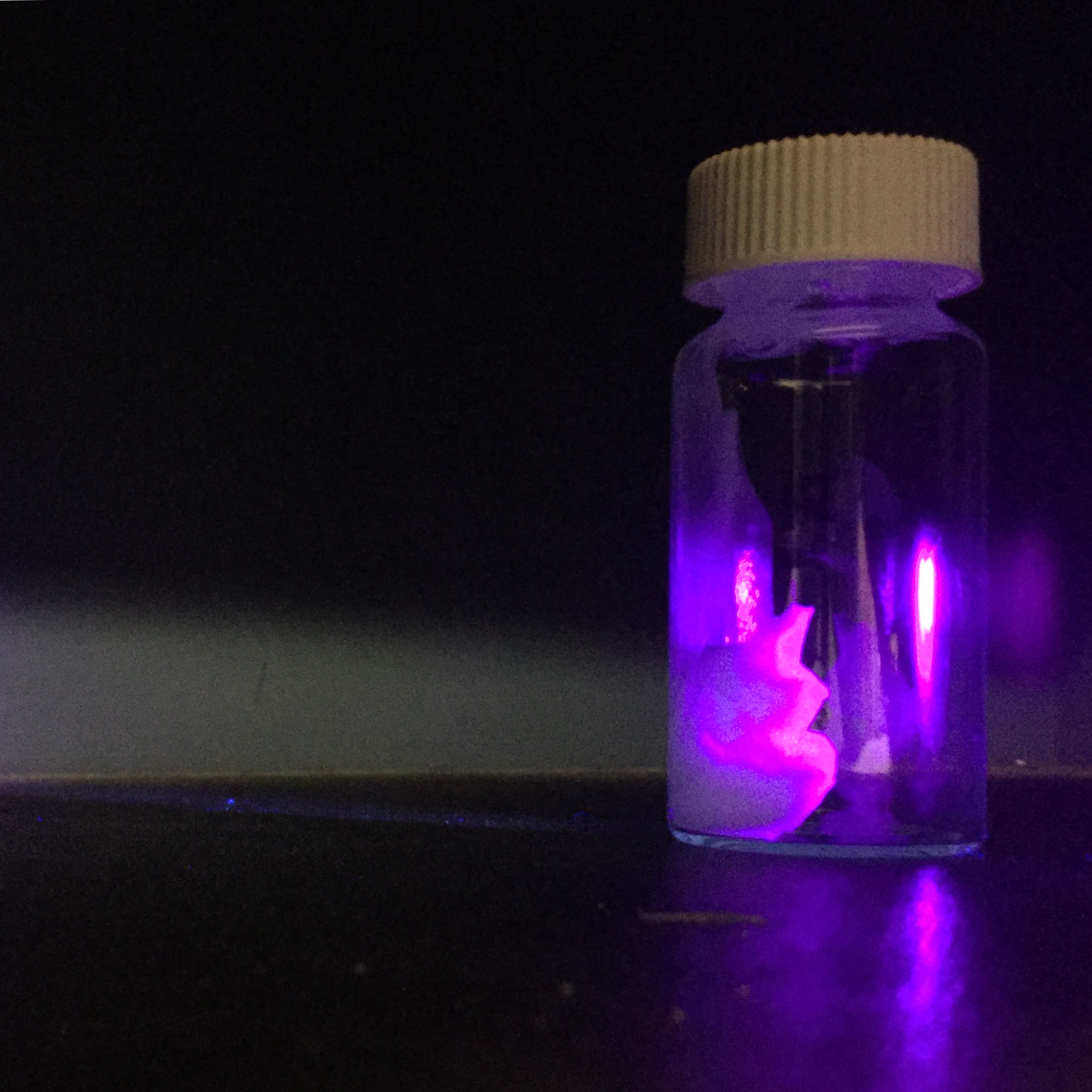In 1603, in his search for the “Philosophers Stone”, a substance which can transmute earthly matter into pure gold, the Italian alchemist Vincenzo Casciarolo discovered the “Bolognian stone”. This emitted a blue glow in the dark after it had been exposed to sunlight. Also known as “Lapis Solaris”, (but now called barium sulfide), this was the first laboratory created phosphor. Galileo wondered about the unique phenomena of the Bolognian stone, asking “how it happens that the light is conceived into the stone”. Benzene, discovered by physicist Michael Faraday in 1825, is used widely in modern fluorescence and synthetic dyes. In 1862 German chemist Frederik Kekule had a revelation of the chemical structure of Benzene, impelled by a dream image he had of a serpent consuming it’s own tail in a halo of fire. This is the figure of the ouroboros, which is a key alchemical symbol.
As alchemical practices transmuted into modern chemistry, luminescence became used widely across experimental science and led to fields such as immunofluorescence in cellular biology. Yet I feel the essence of fluorescence is still somewhat mysterious – the mystery in its core is the mystery of the quantum realm, which is the ultimate source of this compelling phenomenon. Luminous matter reveals the alchemical interplay between energy and matter, in ways that still makes one ask “how light is conceived” into materials. Thus I am working with the scientists in combining MOFs with luminescence on the molecular level, in a way that imbues these unique materials with unique optical properties. Perhaps I’m adding a trace of “al” to contemporary “chemical” practices!
( (un)apologies to Horiba pty ltd for using the FluorEssence name ; )

